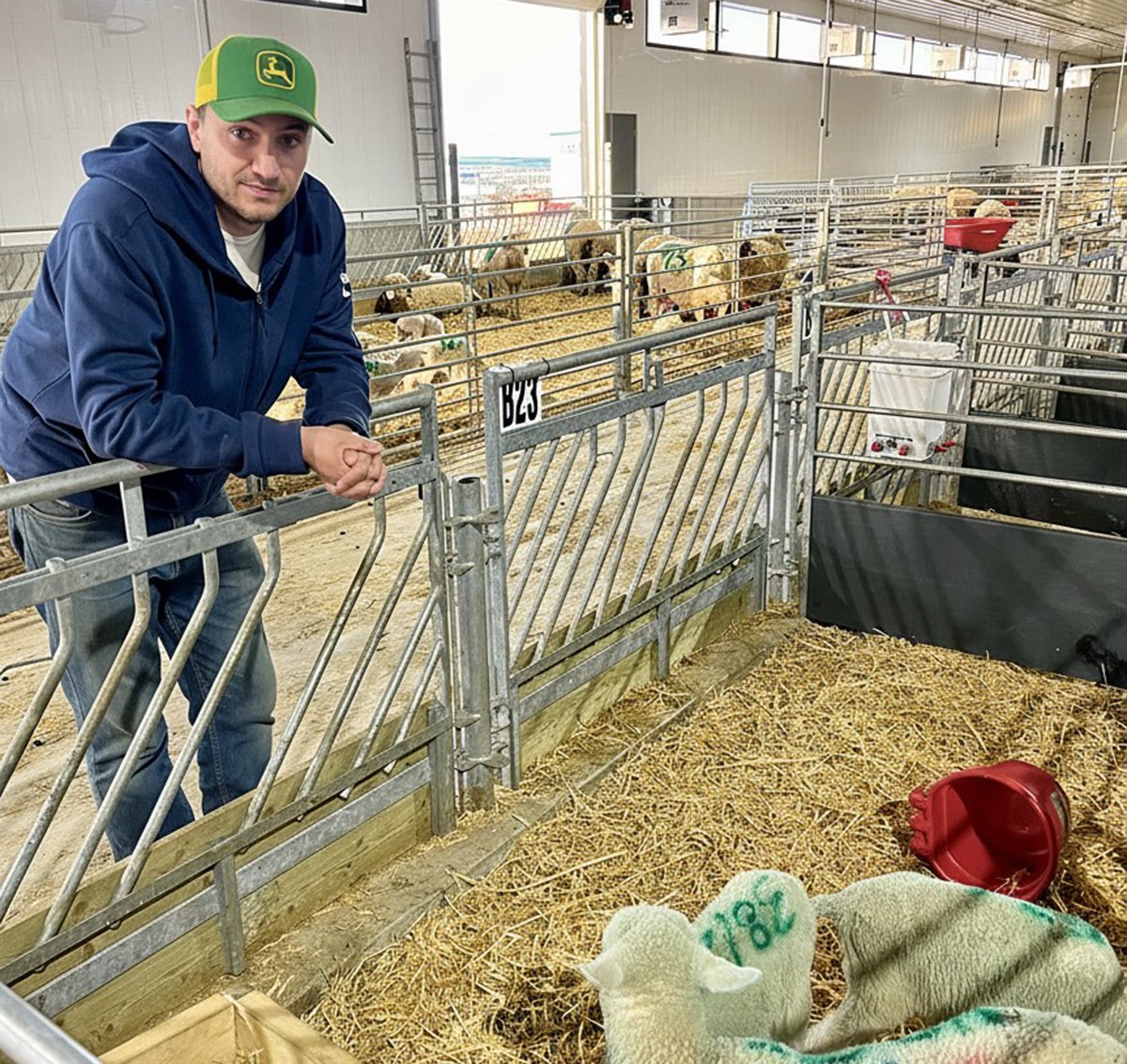Producers in the Netherlands increase biosecurity and avoid group treatment of animals to slash antibiotic use by 58 percent since 2009
OTTAWA — Producers in the Netherlands and around the world feared that animal health and livestock economics would suffer when the Dutch government drastically reduced the use of anti-microbials in livestock.
Their fears proved groundless.
Livestock antimicrobial use in the country has dropped 58 percent from 2009, but there has been no increase in disease incidence and no indication that the reduction has had a negative effect on animal health and welfare.
So says Dr. Jaap Wagenaar, chair of clinical infectious diseases in Utrecht University’s veterinary medicine department, who spoke at the December conference of the National Farmed Animal Health and Welfare Council.
Read Also

Solar, sheep provide valuable farm diversification
Eric Steeves says raising sheep on forages grown under solar panels provided economic stability and perhaps even saved his family’s fifth generation southern Alberta grain farm.
“In the Netherlands, we have not seen any negative effect on animal health and animal welfare after the reduction,” said Wagenaar.
Producers now make greater use of vaccination and have moved toward individual rather than group treatment of animal health problems, he said. Increased biosecurity and other preventive treatments are also involved.
That said, Wagenaar also told the gathering that antimicrobials are nevertheless vital.
“Animal husbandry without antimicrobials is impossible. I really hate the systems that say ‘raised without antimicrobials’ … because it’s impossible and it’s not fair to the consumer because they think that when you start with an animal, you can go through the process without treatment.”
The use of antimicrobials in both livestock and people is under scrutiny because of an increase in antimicrobial resistant (AMR) bacteria, which render common drugs useless to fight infection.
Overuse of such drugs increases AMR and has led the World Health Organization, the Food and Agriculture Organization and the World Organization for Animal Health to develop policies to limit their use.
“There is really an urgent need to do something,” said Wagenaar, quoting research that says 700,000 people a year die from treatment failures caused by AMR.
Those losses could reach 10 million by 2050, he added.
The Netherlands started its AMR policy in 1994, and fluoroquinolones, commonly used in poultry, were among the first antimicrobials to be limited.
The extent of resistant bacteria wasn’t well known at that time, but the 2005 appearance of the AMR known as MRSA (methicillin resistant staphylococcus aureus) on veal and hog farms, and in the farmers themselves, raised awareness.
An outbreak of Q fever in 2008-09 further increased public awareness of the relationship between livestock and human medicine, said Wagenaar, even though Q fever, carried by pregnant goats, has nothing to do with AMR.
The Dutch government decided to gradually reduce antimicrobial use in livestock. Among its policies was a ban on fluoroquinolones unless analysis showed no other alternative. Prophylactic use of antimicrobials was banned.
Wagenaar said antimicrobial use by veterinarians is tracked and monitored with data on how many animals where treated, where and when. A medical authority analyzes the data and the trends by livestock sector. These are compared to benchmarks.
Producers receive reports every quarter showing how they compare to the average use of antimicrobials in their sector.
“This works extremely well,” Wagenaar said. “I can tell you that there are farmers that are already low, but they want to be the lowest.”
AMR is monitored by swabbing healthy animals when they are sent to slaughter. Trends show a reduction in the amount of AMR found, Wagenaar said.
AMR prevalence data is harder to collect in humans, who don’t regularly submit to rectal swabs.
Dr. John Conly, co-director of the Snyder Institute for Chronic Diseases at the University of Calgary and a consultant to the World Health Organization on AMR, agreed that use of antimicrobials in human treatment play a role in AMR development.
Antimicrobials are vital for treating life-threatening conditions, but some are also used to prevent health problems, such as during and after surgery.
Conly referred to an American study that found 56 percent of hospital patients are given antibiotics.
He said that likely contributes to development of AMR, and resistance often evolves from a low level to a higher level.
Wagenaar said public pressure played a vital role in implementing policies in the Netherlands. He thinks other countries could implement similar policies to combat the AMR problem and protect existing treatments for both humans and animals.
“I think that you in Canada can do a lot,” he said.
“You are a well organized country. You can have good biosecurity, good vaccination programs. You have professionals and farms working. You have good veterinarians. I think you can do the same thing as in the Netherlands.”
Other countries don’t have those advantages, he added. Producers may use counterfeit drugs, diluted drugs or those that are improperly stored before use.
Conversely, they may not have access to any drugs at all. As well, knowledge about AMR is limited in some countries, and lack of veterinary services is a factor, as are animal housing conditions, biosecurity and climate. It may be hard to know where to begin a fight against AMR, said Wagenaar.
“This should never be a reason that you should do nothing.”















